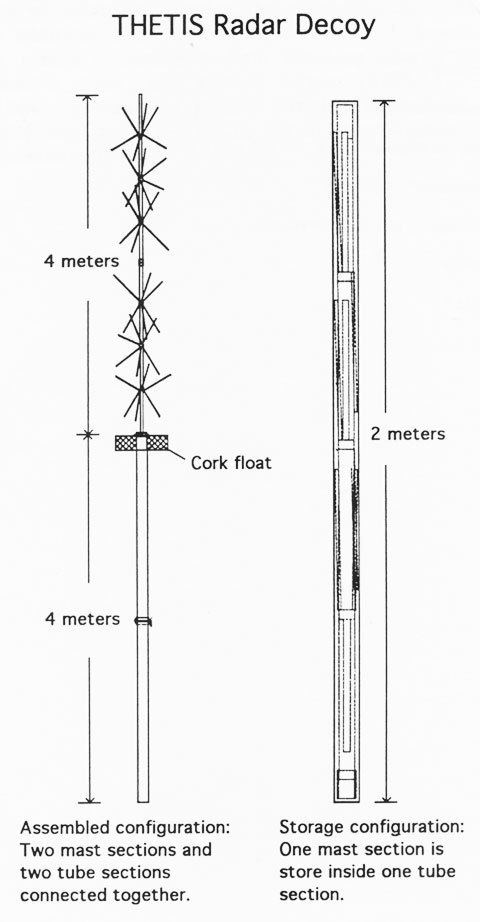 | ||
Thetis was the name of a floating radar decoy used by German U-boats during the Second World War.
The device was stored dismantled in the bow compartment as a pole about two metres long. Assembly usually took place in the U-boat's conning tower, and could be assembled in about four minutes (FuMT 2 - Thetis IIC). Later versions could be launched from a standard torpedo tube (FuMT 4 - Thetis US). When deployed, it was extended to a total length of eight metres, half of which was submerged. The upper half had a series of reflectors that were tuned to Allied anti-submarine radar wavelengths to give the same return signal as a U-boat. The number of Thetis decoys carried varied between different U-boats:
The first time the Allies knew about the "Thetis" was in a coded radio message to all U-boats transmitted on 11 January 1944. "Thetis" was introduced in January, when large numbers were released into the Bay of Biscay in July to simulate U-boat patrols during the Battle of Normandy.
